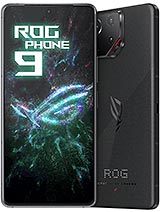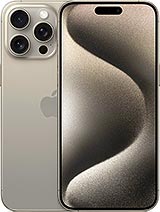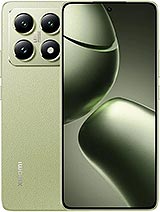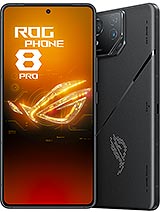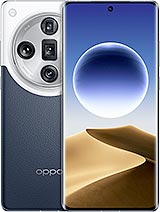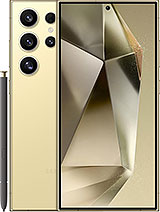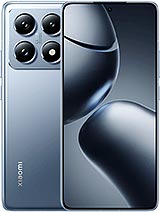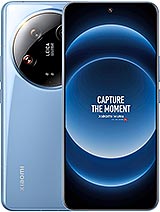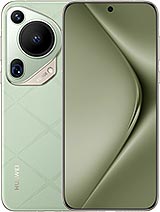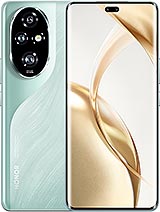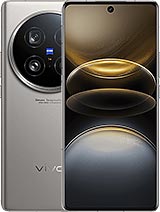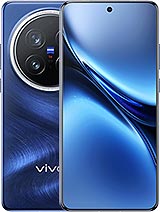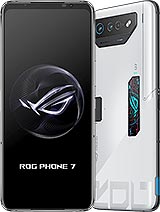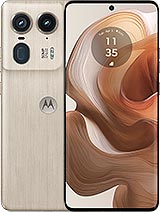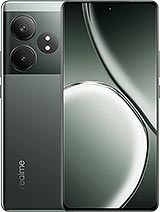Asus ROG Phone 9/9 Pro review

Display
The ROG Phone 9 and 9 Pro display hasn't changed drastically this generation. You are still looking at a large 6.78-inch Samsung E6 OLED panel with a punch hole introduced last year to slim the phone's bezels down.

The one notable upgrade from last year is that the display can now do a whopping 185Hz refresh rate.
First, let's talk about brightness. Asus advertises the same brightness numbers as it did for the ROG Phone 8 generation. These are still pretty impressive, with 2,500 nits of peak brightness and 1,600 nits of whole display brightness.
We did our standardized testing and measured a very impressive 936 nits of brightness on the slider with an incredibly impressive max auto figure of 1958 nits. This is perfectly comfortable to use outdoors, even in the brightest of sunlight. Also, it is a notable upgrade in brightness compared to last year's ROG Phone 8 generation.
The ROG Phone 9 has hardware support for HDR10+ on its display. In terms of hardware video decoding, it can do HDR10, HDR10+ and HLG, just no Dolby Vision.
The phone also has the highest possible Widevine L1 DRM certification, allowing apps like Netflix to offer up FullHD streams to saturate the display resolution.
High refresh rate handling
The ROG Phone 9 and 9 Pro can refresh at up to a whopping 185Hz. There is also LTPO tech on board for dynamic refresh rate adjustment. Said dynamic adjustment, however, only works up until 120Hz refresh rate.

The phone has a total of four refresh rate modes. 60Hz, 120Hz and Auto all share the same general automatic switching logic - once the phone is idle for a few seconds and you are not interacting with it, the refresh rate drops down drastically to like 5Hz to save power. Interact with the phone, and it shoots back up. The phone also does video playback detection and triggers 48Hz, 30Hz or 24Hz mode when appropriate. The only difference is that the Auto mode and 120Hz mode go beyond 60Hz when you interact with the phone up to 120Hz.

If you want to make use of higher refresh rates, you have to either select the 165Hz mode and enjoy a fixed 165Hz all throughout the UI with no automatic switching or trigger 185Hz mode, which is only available through Game Genie. The 185Hz mode is also fixed with no automatic switching. This behavior is a bit different from the ROG Phone 8 generation since that phone had automatic switching at 165Hz as well, which is now gone.

Battery life
Battery endurance has traditionally been a big focus for ROG phone devices. Last year, with the major redesign of the ROG Phone 8, Asus had to reduce the battery capacity by a bit (5,500 mAh). This year, thanks to improvements in tech, the ROG Phone 9 and 9 Pro have a 5,800 mAh battery. That's almost as much as the 6,000 mAh that used to be standard within the family.

The ROG Phone 9/9 Pro managed a very impressive Active Use Score of 16:41 hours. This year's series has notably better endurance than its predecessor through the combination of a larger battery and a more efficient chipset, plus advanced LTPO display tech for dynamic refresh rate adjustment. The uptick in endurance is across the board in all of the tests.
Charging and battery care
Asus has been relying on 65W fast charging tech for some time now, and the ROG Phone 9 generation is no exception. It uses HyperCharge, sometimes called Direct Charge, which is an entirely standard Power Delivery 3.0 with Programmable Power Supply (PPS) with additional support for Quick Charge 3.0 and 5.0. Both available USB Type-C ports on the phone support this 65W charging scheme. We also got a compatible charging adapter bundled with both our ROG Phone 9 Pro Edition and the regular ROG Phone 9.

We managed to charge the ROG Phone 9 from dead to 45% in fifteen minutes and to 76% in another fifteen. A full charge took a pretty speedy 47 minutes in total.
The ROG Phone 9 series also supports wireless charging (15W Qi 1.3), just like the ROG Phone 8 series.
Asus also takes battery care pretty seriously. This is not a newfound priority either, as previous ROG Phones have also enjoyed more than a few extensive options and features in this regard. Starting with the ROG Phone 5, everything related to PowerMaster is merged and organized within the battery settings menu for added convenience.
Starting with the basics, there are quite a few System modes. A few predefined ones, which are also accessible through the Armoury Crate app, since they do a lot more than just tweak your battery profile and behavior, but basically, with X Mode, you get the fewest restrictions on battery usage, followed by Dynamic, which is the sort-of default one you are meant to use daily and then Ultra durable mode is your battery saver.
The Ultra Durable mode can also be activated on a schedule, which is neat for off-hours.

Beyond this, there is also a dedicated Battery care menu. Custom charging limit is a pretty common feature. It allows you to limit the time your battery spends at 100% charge, which is detrimental for it in the long term and has the phone stop charging automatically at, say, 90% or 80%.




Battery care • Steady charging • Scheduled charging
While keeping a battery pinned at full charge for prolonged periods is bad, heat is the biggest battery killer. A faster charging rate usually means more heat. Hence, the Steady charging option is included. It allows you to effectively cap the charging rate to lower wattage and choose longevity over a faster top-off. There are two levels of Steady Charging to choose from - Steady and Ultra Steady.
You can also combine Steady Charging and the Custom Charging limit with Scheduled charging. It's especially convenient for overnight charging where you don't want the battery sitting at 100% the entire night. It would charge some of the battery and only top it off closer to your expected wake time - based on your alarm time, do not disturb mode, or airplane mode.
Last but definitely not least, the ROG Phone 8 has a Charging mode selection menu where Bypass charging resides. The name is self-explanatory - you can connect a power source and power the phone without charging the battery. This is great for things like prolonged gaming sessions where the heat builds up inside the phone anyway, and you don't want any extra added from the charging process.
Speakers and audio output
The ROG line's long-standing and legendary dual amplified front-facing speakers were axed with the 8th phone generation and are seemingly not coming back. Certainly not with the ROG Phone 9 and 9 Pro, which simply have a hybrid stereo speaker system with a dedicated bottom-firing speaker and an amplified earpiece as the second channel. There simply isn't as much space as before to fit large dual front-facing speakers.

Even with the downgrades, the audio output from the ROG Phone 9 and 9 Pro sounds very good in person. Our testing confirms these observations as well. The ROG Phone 9 and 9 Pro don't get as loud as the 7th generation and are even a bit quieter than the 8th generation. Still, the excellent tuning and performance are there.
Use the Playback controls to listen to the phone sample recordings (best use headphones). We measure the average loudness of the speakers in LUFS. A lower absolute value means a louder sound. A look at the frequency response chart will tell you how far off the ideal "0db" flat line is the reproduction of the bass, treble, and mid frequencies. You can add more phones to compare how they differ. The scores and ratings are not comparable with our older loudspeaker test. Learn more about how we test here.
Asus also put some effort into balancing sound output in this generation. The AeroCase and ChillCase both come with a special channel at the bottom of the phone meant to redirect the sound forward. This is accompanied by software tuning in the form of a toggle for "Audio Redirection". The system works reasonably well in our experience but is no substitute for the old ROG audio experience.
As mentioned, the ROG Phone 9/9 Pro still has some audio goodies to go over. For one, Asus still partners with DIRAC. That includes Hi-Res Audio (HRA) and Hi-Res Audio Wireless certifications as well as the Dirac Virtuo headphone spatial audio enhancer, introduced with the ROG Phone 7. It works on any connected set of headphones and employs high-resolution binaural room impulse response technology to restore speaker crosstalk and correct the stereo soundstage. The desired effect is to make it so that sound seemingly comes from a pair of premium stereo speakers in front of the listener as opposed to from inside their head.
The ROG Phone 9/9 Pro supports all major Bluetooth audio transmission standards, including aptX adaptive, aptX Low latency, aptX Lossless Audio, LDAC and AAC.
On the software side of things, most audio enhancements are still organized neatly in one location within the AudioWizard.

It offers access to a 10-band equalizer and a total of four pre-made modes: Dynamic, Music, Cinema and Game. Music is meant for general use, Cinema has a slightly wider sound stage and enhances bass and vocals. Game mode has the widest sound stage of the bunch and enhances small sounds like footsteps and high frequencies for a better spatial location.
Finally, there is Dynamic mode, which intelligently switches between Music and Game modes depending on whether Game Genie - the Asus in-game overlay is active or not. Our audio tests were done using the default Dynamic mode.
Interestingly enough, the powerful, system-wide AI Noise Cancellation from the ROG Phone 8 generation seems to be missing this year.
Reader comments
- Denshaotoko
- 13 Feb 2025
- 15S
Got non pro version pre-order discount for 899 off Asus official store. Only lacking less animex pixels and replace with one macro camera. No bad product only bad price. very good deal.
- Gto
- 22 Jan 2025
- Q{d
My biggest gripe with ROG phones was the design, because otherwise they had pretty much everything I wanted: fast USB, headphone jack, flat screen, powerful cpu, battery management and such. So last year I gave the ROG 8 pro a try, the lack of l...
- Architect
- 20 Jan 2025
- d%C
Hahaha how is the oneplus 13 better option even for games; 😂 rogphone 9 pro is the strongest phone in raw power, even without x mode or even the aerocooler still outperformed everything out there. One plus 13 is a good daily phone for 800 bucks and t...
